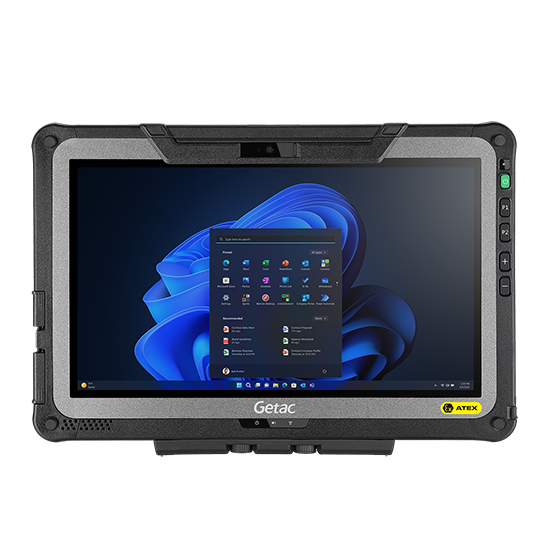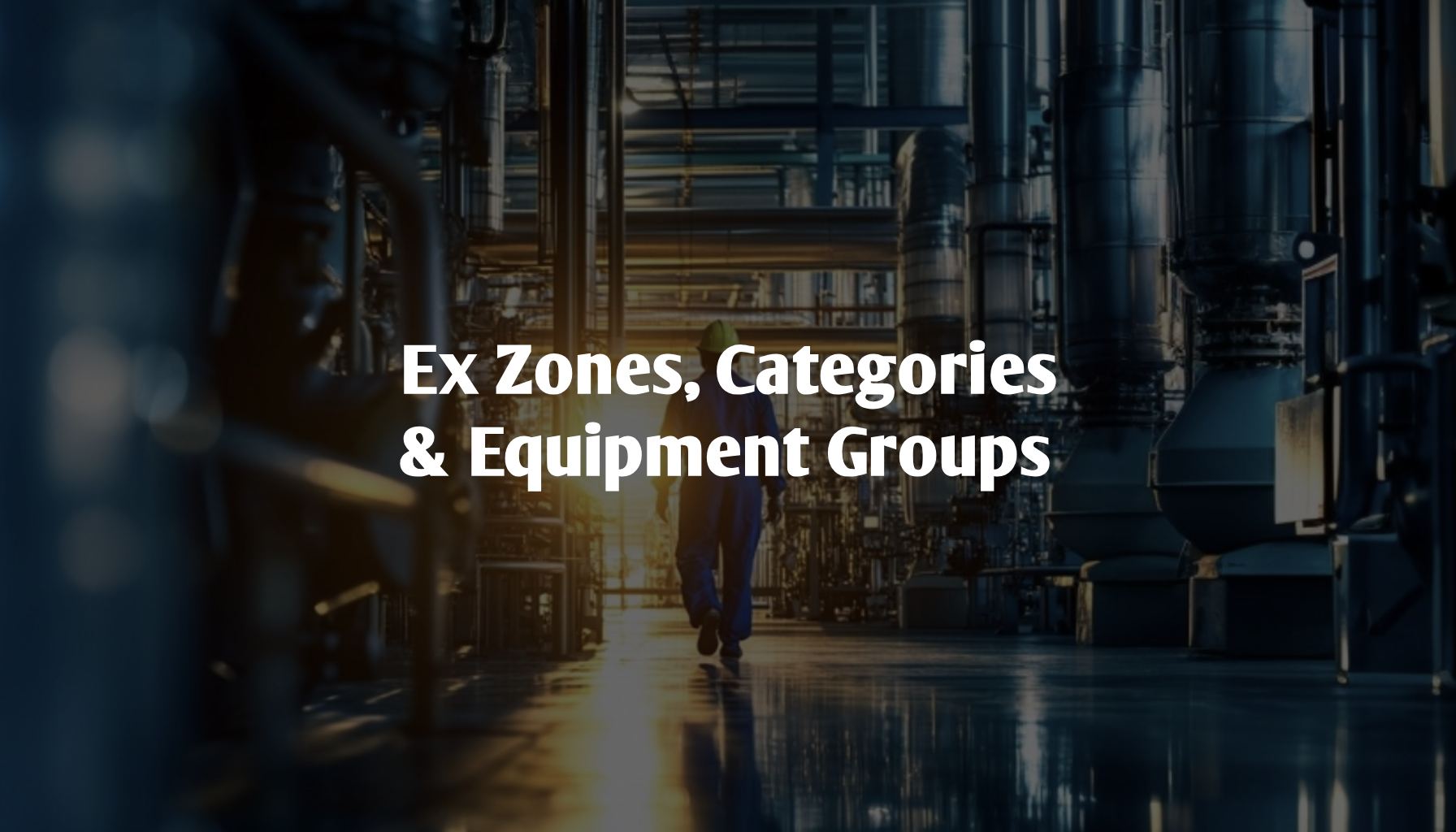When dealing with hazardous environments where explosive atmospheres are a possibility, it’s crucial to select the right equipment.
The selection process is governed by a clear relationship between equipment groups, zones, and categories, all of which are designed to minimize the risk of explosions.
This blog will explore how these elements interact, particularly under the ATEX directives, to ensure safety in potentially explosive environments.
Zone Classification and Its Importance
The likelihood of an explosive atmosphere occurring in a particular area is expressed through zone classification. This classification is pivotal in determining the type of equipment that can be safely used in that area.
According to Annex II, Section B of the ATEX Workplace Directive 1999/92, areas are classified into different zones based on the frequency and duration of the presence of an explosive atmosphere:
- Zone 0 (for gases) and Zone 20 (for dusts): Where an explosive atmosphere is present continuously or for long periods. (More than 10% of operating time)
- Zone 1 (for gases) and Zone 21 (for dusts): Where an explosive atmosphere is likely to occur in normal operation occasionally. (Between 0.1 and 10% of operating time)
- Zone 2 (for gases) and Zone 22 (for dusts): Where an explosive atmosphere is not likely to occur in normal operation, but if it does, it will persist for a short period only. (Less than 0.1% of operating time)
The zone classification is directly related to the selection of equipment, as different zones require different levels of protection to prevent ignition sources from causing explosions.
Equipment Groups and Categories
Equipment intended for use in explosive atmospheres is categorized into groups and categories, as defined by the ATEX Equipment Directive 2014/34. This directive specifies that the equipment used outside of underground parts of mines falls under Group II.
The protection level required for Group II equipment is determined by the zone classification and is divided into three categories:
- Category 1: This equipment provides a very high level of protection and is suitable for use in Zone 0 and Zone 20 (and all other zones). It can be used in areas where explosive atmospheres are present continuously, frequently, or for long periods. Category 1 equipment is designed to prevent ignition under both normal and multiple or rare fault conditions.
- Category 2: Equipment in this category offers a high level of protection and is suitable for use in Zone 1 and Zone 21 (as well as Zones 2 and 22). This equipment is intended for environments where explosive atmospheres are likely to occur occasionally during normal operation. Category 2 equipment is designed to prevent ignition under both normal and single fault conditions.
- Category 3: This equipment provides a normal level of protection and is allowed in Zone 2 and Zone 22. It is suitable for areas where explosive atmospheres are unlikely to occur, and if they do, they will only exist for short periods.
Selection of Equipment
The relationship between zones and categories is crucial in selecting the appropriate equipment for hazardous areas. The higher the likelihood of an explosive atmosphere occurring, the higher the level of protection required.
For example, equipment used in Zone 0 or Zone 20 must meet the stringent requirements of Category 1 to ensure safety.
However, this relationship does not account for other potential consequences of an explosion, such as the toxicity of materials involved.
Additional criteria, like temperature class, type of protection, and explosion group, must also be considered. These criteria depend on the combustion and explosion properties of the substances used in the hazardous area.
| Category | Protection Level | Zones Allowed |
|---|---|---|
| Category 1 | Very High | Zone 0, Zone 20 (all zones) |
| Category 2 | High | Zone 1, Zone 21 (Zones 2, 22) |
| Category 3 | Normal | Zone 2, Zone 22 |
Marking and Conformity
To aid in the correct selection of equipment, necessary information is typically marked on the equipment itself and should also be included in the ATEX EU Declaration of Conformity.
This ensures that the equipment meets the required safety standards and is suitable for use in the designated zones.
Special Considerations: Mechanical Equipment and Protective Systems
It’s important to note that mechanical equipment without its own ignition sources generally falls outside the scope of the ATEX Equipment Directive 2014/34. As such, this equipment cannot be accompanied by an ATEX EU Declaration of Conformity but may still be used in zone-classified areas if deemed safe.
Protective systems, which are separately marketed for use as autonomous systems, are covered by the ATEX Equipment Directive 2014/34 but are not grouped and categorized like equipment.
Their essential requirements are not dependent on the likelihood of an explosive atmosphere but are designed to reduce the effects of an explosion to a safe level, regardless of the explosion’s probability.
These systems may also be specifically designed for a particular explosive atmosphere, in which case they must be marked accordingly.
Real-World Application
To illustrate how to interpret ATEX/IECEx markings, let’s break down the example provided from the Getac F110-Ex datasheet:


Marking Interpretation
- ATEX/IECEx Zone 2/22: This device is certified for use in Zone 2 (for gases) and Zone 22 (for dusts), which are areas where an explosive atmosphere is not likely to occur during normal operation, but if it does, it will persist for a short period.
- Ex II 3G Ex ic op is IIC T4 Gc:
- Ex II: Indicates the equipment is suitable for use in all non-mining areas (Group II).
- 3G: Category 3 equipment suitable for Gas environments, providing a normal level of protection (Zone 2).
- Ex ic: Intrinsically safe circuit with a normal level of protection.
- op is: Equipment protected by inherently safe optical radiation.
- IIC: Suitable for gas group IIC (suitable for gasses with the lowest ignition energy like hydrogen).
- T4: Temperature class T4, meaning the equipment surface temperature will not exceed 135°C. (suitable for gasses with ignition temperature above 135°C, T1-T4)
- Gc: Equipment protection level Gc, for use in Zone 2 (normal protection).
- Ex II 3D Ex ic op is IIIC T130°C Dc:
- Ex II: As above, suitable for non-mining environments.
- 3D: Category 3 equipment suitable for Dust environments, providing a normal level of protection (Zone 22).
- Ex ic: Intrinsically safe circuit, normal protection.
- op is: Equipment protected by inherently safe optical radiation.
- IIIC: Suitable for dust group IIC (conductive dust environments).
- T130°C: The maximum surface temperature of the equipment will not exceed 130°C.
- Dc: Equipment protection level Dc, for use in Zone 22 (normal protection).
This marking ensures that the F110 Ex rugged tablet can be safely used in environments where explosive gases (Zone 2) and dusts (Zone 22) might occasionally occur.
By meeting the requirements for Category 3 equipment, it ensures that under normal operational conditions, the device won’t act as an ignition source, thus preventing potential explosions in hazardous areas.
Adding real-world context, this could be a suitable tool in industries like oil and gas, chemical plants, or grain processing facilities, where such hazards are common.
Conclusion
The relationship between equipment groups, zones, and categories is a cornerstone of ensuring safety in areas where explosive atmospheres might occur. By carefully considering zone classifications and matching them with the appropriate equipment categories, businesses can significantly reduce the risk of explosions, protecting both people and property.
Understanding and adhering to these classifications, as mandated by the ATEX directives, is not just a legal obligation but a critical component of safe operations in hazardous environments.




